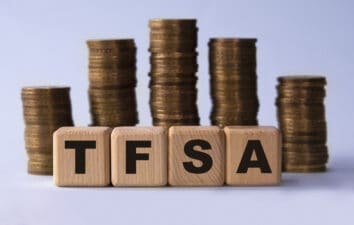Did you know that there’s a deadline for withdrawing funds from your Registered Retirement Savings Plan (RRSP)?
It’s true. No later than your 71st birthday, you must convert your RRSP to a Registered Retirement Income Fund (RRIF) and withdraw money. Mandatory withdrawals start at 5% at age 71 and increase from then on.
In a recent series of articles, I wrote about Canadians’ average RRSP balances at various ages. The gist of these articles was that most Canadians’ balances were rather low. That’s an alarming observation since RRSP funds are the second most common form of pension income after Canada Pension Plan (CPP) benefits. Since 71 is such an important milestone in every Canadian’s RRSP journey, I figured I’d continue my coverage of RRSP balances by exploring how much the average Canadian has saved for retirement at that age.
A little under $272,000 (most likely)
Although I wasn’t able to find a specific figure for 71-year old Canadians’ average RRSP balances, I did find a pretty credible estimate for the 65+ age cohort: $272,000. That comes from Statistics Canada, so it’s probably pretty reliable.
Now, we can’t exactly infer the exact RRSP balance from someone at the age of 71 from that. However, we do know that most Canadians are retired by age 65, and start drawing down their RRSPs before it becomes mandatory.
Usually, when a person hits retirement age, their savings start to shrink. By age 71, most people have been retired for six years. So, I’d estimate that the average retirement savings among 71-year-old Canadians is somewhere in the $250,000 to $270,000 range.
The magic of RRSPs
It’s hard to overstate the magic of RRSPs when it comes to compounding wealth. They do become taxable upon withdrawal, but if you aren’t earning much income in retirement, the tax rate is pretty low. And, of course, you can compound your investments without interruption while you hold them in your RRSP.
In taxable accounts, compounding is interrupted by capital gains and dividend taxes incurred along the way. In an RRSP, this “interruption” doesn’t occur until you retire, so you can grow your investments much faster.
Let’s imagine you held a $100,000 position in Fortis (TSX:FTS) stock in a taxable account. Fortis is a good example to work with because it pays dividends and, like all stocks, has the potential for capital gains.
If you held Fortis stock in a taxable account, there would be no way to avoid the dividend taxes. The dividends come in four times a year and are taxed even if you have them set to re-invest automatically. $100,000 in Fortis shares would produce $4,400 per year in dividend income. That amount is “grossed up” to $6,072, and a 15% Federal tax credit plus a varying provincial tax credit are removed.
If you had a 50% marginal tax rate and lived in Nova Scotia, you’d ultimately pay a $1,609 tax; that is a $3,036 pre-credit amount minus $1,426.92 in Federal and Provincial credits. You’d also pay a 25% tax if you cashed out a 10% capital gain ($2,500), and that tax is set to increase later this year. The RRSP reduces all of these taxes to zero while your shares are still in the account, allowing you to grow and compound your FTS shares more than you could in a taxable account. So, there’s a lot of wisdom in RRSP investing.







